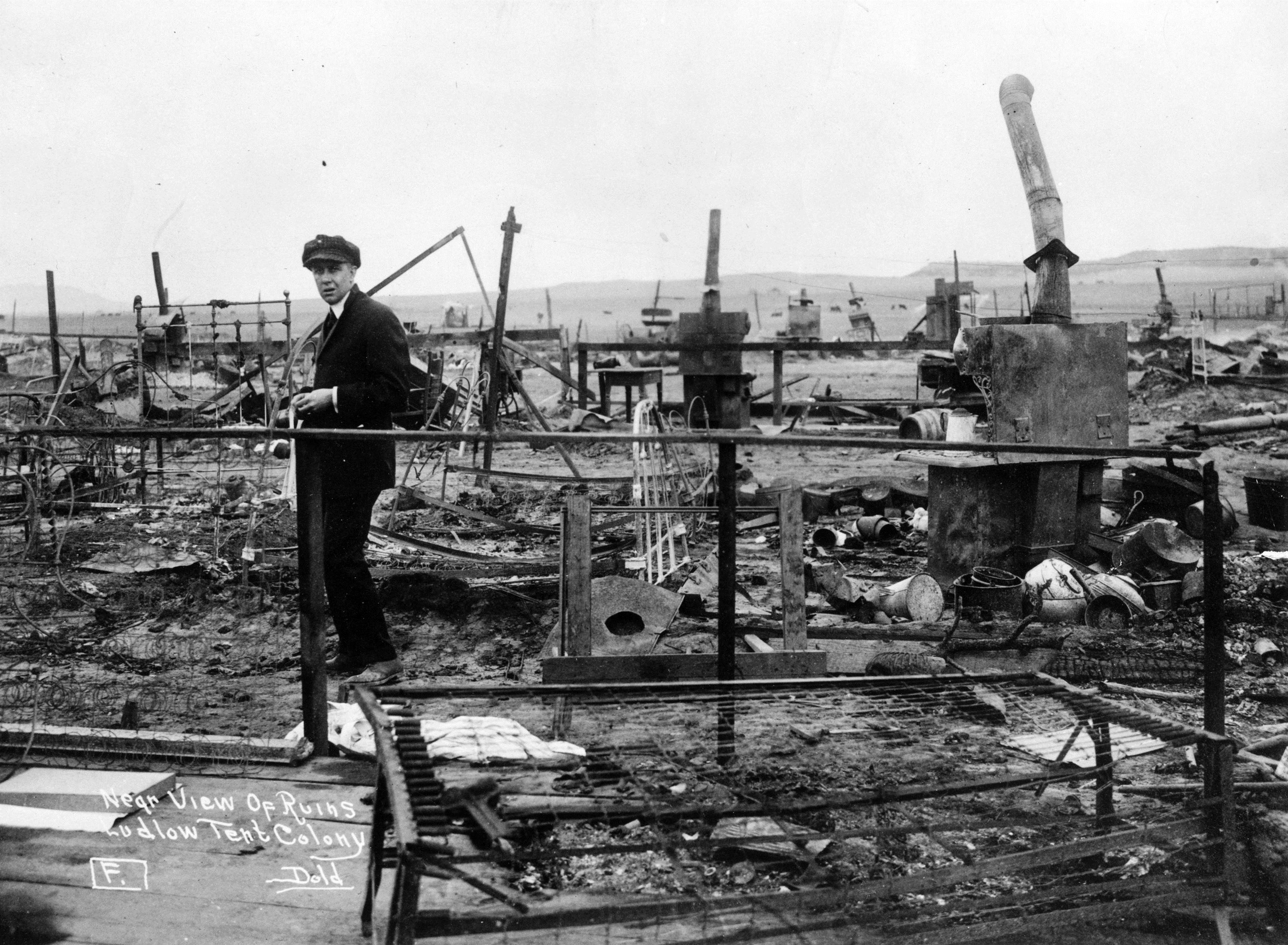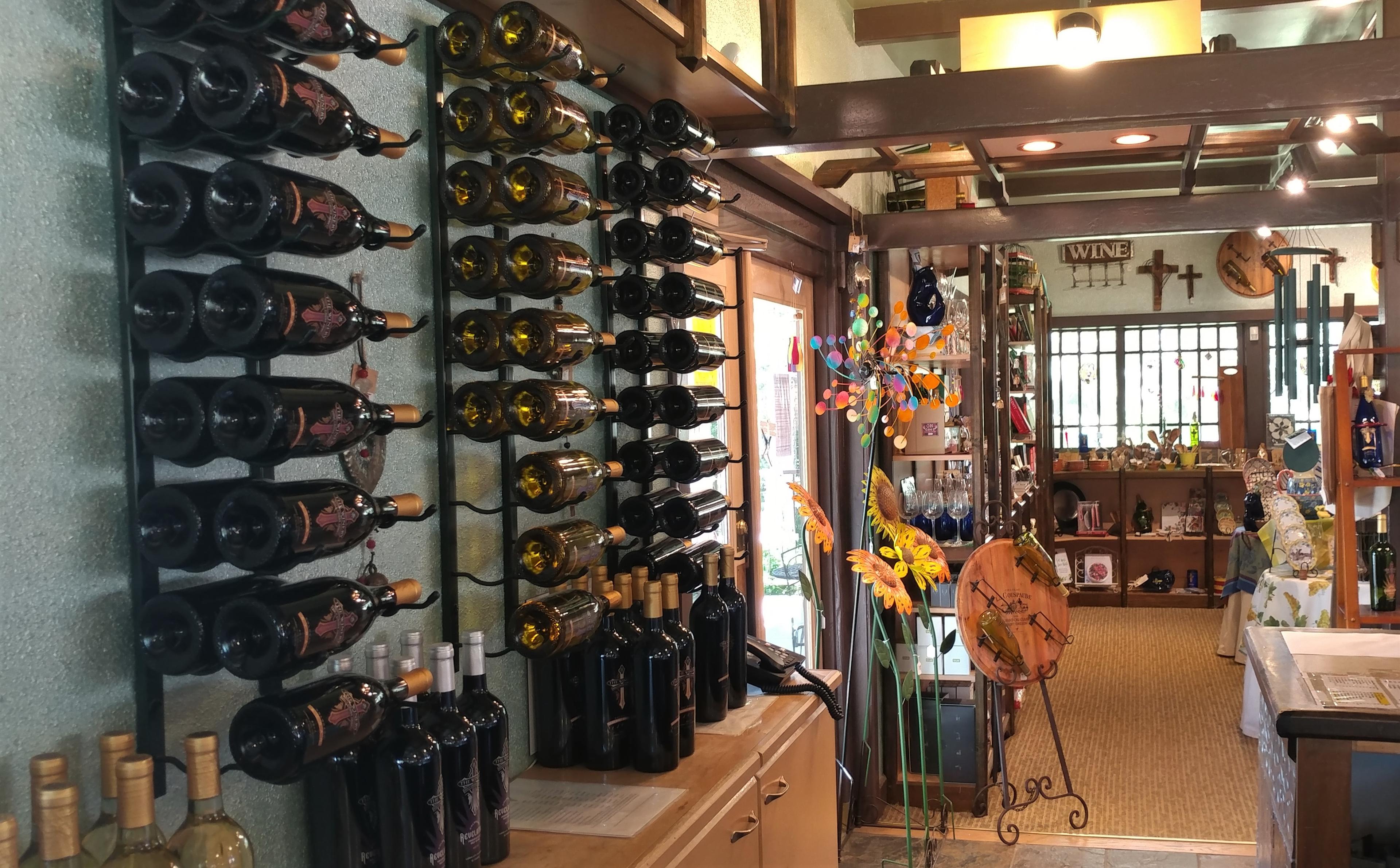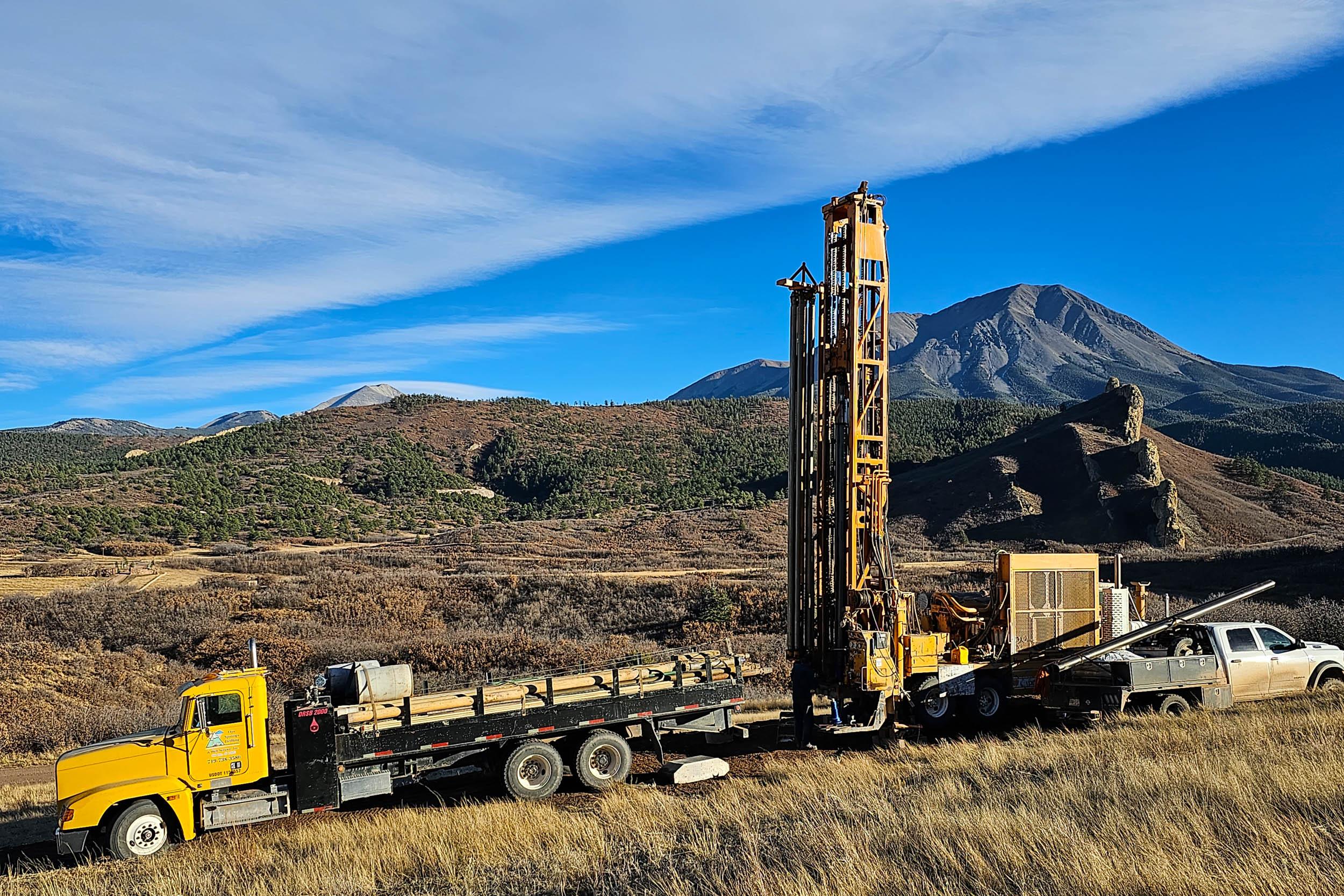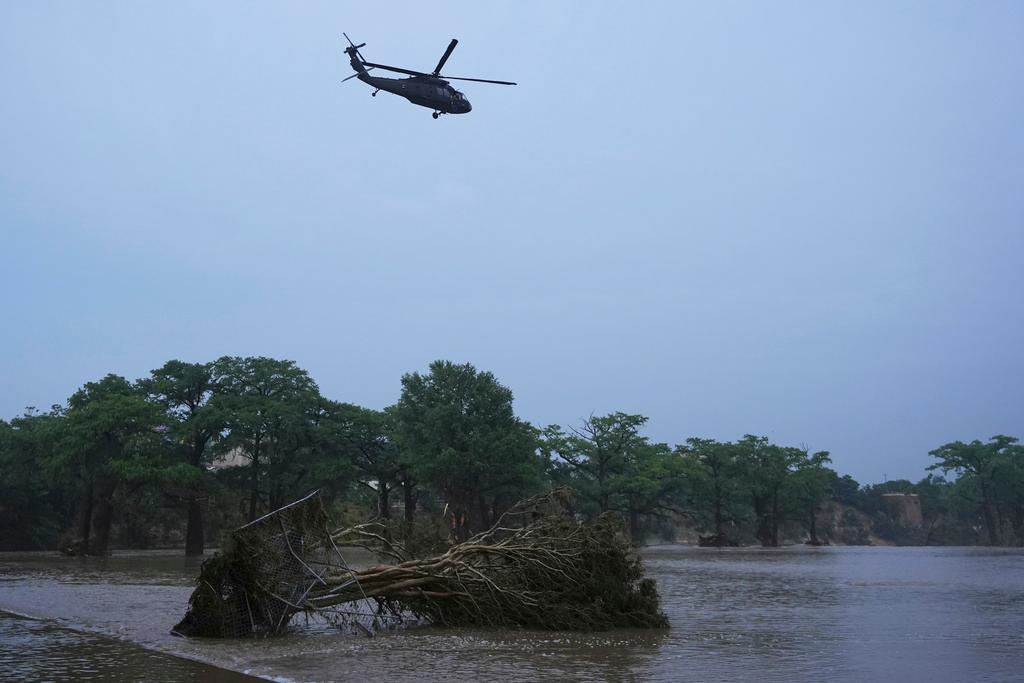
The Ludlow Massacre, one of history’s most violent moments in labor relations, took place 100 years ago on the prairies of southern Colorado and killed 20 people, including women and children.
The massacre, which took place on April 20, 1914, was just one event in the Colorado Coal Field Wars which comprised a longer conflict over dangerous working conditions and unfair labor practices.
This conflict was between coal miners organized by the United Mine Workers of America and the Colorado Fuel and Iron company owned by John D. Rockefeller, Jr., the majority shareholder. Activist Mother Jones was also deeply affected by the events at Ludlow, traveling across the country, telling the story, and testifying before Congress.
The danger of Colorado coal mines
Colorado State Historian William Convery says Colorado was the most hazardous state in the nation for coal miners with more than 1,700 miners dying in Colorado coal mine accidents from the end of the 19th to the beginning of the 20th centuries.
Many miners were killed by explosions caused by the combination of coal dust and methane, a gas that occurs naturally inside the mines.
“If miners weren’t careful – if they didn’t wet down the rooms they were working in – if they didn’t take precautions, they created combustible environments that could be set off by a single spark,” Convery says.
In addition to working in unsafe conditions, the miners often worked 12-hour days, six or seven days per week. They weren’t paid by the hour but instead received 80 cents per ton of coal produced. And, tons were measured at 2,200 pounds by the company instead of the standard 2,000 pounds.
Mine safety was left to the workers and they often had to balance safety issues with earning a living.
“The work to make your mining environment safer – to lay track, to clear escape routes, to timber up the mines, to wet down the ground so the dust didn’t build up – that work was ironically known as dead work,” Convery says.
“It was the work that made you safe, but for which you were not compensated,” Convery adds.
Coal miners go on strike
In September of 1913, thousands of miners went on strike in southern Colorado to protest their working conditions. In response to the strike, Colorado Fuel and Iron forced the miners and their families from their company-owned homes into tent cities set up by the United Mine Workers of America union on the open prairie.
Ludlow was the largest of the encampments housing people from dozens of different ethnic backgrounds. The winter of 1913-14 turned into one of hardest winters on record, and tensions grew as the miners and their families struggled to live in canvas tents as icy winds howled and deep snow piled up around them.
The union located the tent camps strategically near the mouths of the canyons so they could monitor strikebreakers as they went to and from the mines. Convery says the union strikers were well-armed and willing to use violence when necessary.
The mine operators reacted by hiring private guards who often beat up the striking miners and regularly sprayed the tent camps with gunfire. Some of that gunfire came from the “Death Special,” which was an armored vehicle with a machine gun mounted on the back.
Convery says the private agency guards would drive by the tent camps in the middle of the night, firing randomly into the camp to “strike fear into the hearts of the miners.”
As tensions escalated the Colorado National Guard was called in to try to keep the peace but, Convery says, many of them were on the company payroll.
The actions of this militia drew in others who lived in the area like Dave Bomar's great-grandfather, who farmed near the tent colonies and wanted to help the striking miners. The militia had placed a machine gun on a hill above the family's farm, an outpost where militia and company guards watched closely.
"If they [the farmers] tried interfere or help in any way, [the militia] would machine gun their farm," Bomar says. "That kept them from helping.”
Bomar says his great-grandfather nailed his rifles under the tin of his shed so the militia wouldn’t confiscate the weapons.
“My great grandma had to physically restrain him from going and getting the weapons to go help these people,” Bomar says.
At another nearby ranch, Maria Andreatta wanted to help the striking miners. Andreatta hid ammunition in beehives she kept in her yard or would sew bullets into her clothing to keep the militia from finding anything.
“They would come in with sticks and stir in the flour bins and sugar bins and coffee to see if that’s where they could find the ammunition and guns,” Andreatta’s great granddaughter Beverly Musso says. “They never thought to look in the hems of her skirts.”
Ludlow tent colony burned
All this built up until April 20, 1914, when the militia came looking for a strikebreaker who was believed to be hiding inside the camp. Shots were fired.
Convery says it’s not clear which side fired first but a daylong battle ensued. The militia shot into the tent colony from the surrounding high ground while strikers fired back from behind an embankment near a railroad track.
Josephine Bartolotti lived at the Ludlow camp with her family when she nine years old and her daughter, Jodene Parlapiano, describes their efforts to hide and stay out of harm’s way.
“My mother and her younger brothers hid in a barn when this was going on,” Parlapiano says. “My youngest aunt had to be a baby so she was probably in mother’s arms. And the others? They hid in a well and they hid until dark.”
Parlapiano’s grandfather John Bartolotti, a 45-year-old miner, was killed that day.
Convery says the shooting continued even when a Colorado and Southern train went right through the middle of the battlefield about midday.
“The engineer, seeing what was going on, stopped the train and allowed the strikers cover to retreat into the hills to the east,” Convery says. “But many of the families who had been caught in the crossfire were left behind.”
The strikers dug cellars underneath many of the tents so their families could take cover from the gunfire. After the miners were driven from the tent colony, the Colorado National Guard entered the camp and set fire to the tents.
Convery says the guardsmen were unaware of it at the time but four women and 11 children were hiding in a pit beneath one of the tents. All of the children, and two of the women, suffocated to death as they huddled in the pit while the tent encampment burned.
Mary Petrucci survived the massacre but her three children did not. Petrucci’s granddaughter Mary Elaine Petrucci describes what happened.
“Apparently a mattress had fallen over the opening of the pit,” Petrucci says. “My grandmother and another woman were the only two people who walked out of that pit alive.”
Convery says all-out war erupted in southern Colorado for 10 days and dozens more died.
“The miners took to the hills, got all the guns they could legally obtain and they began systematically attacking mine properties,” Convery says.
The miners attacked strikebreakers, mine managers and camp guards wherever they could find them. They also used dynamite to seal the mines.
“[The miners were] really trying to bring the coal mining system down in Southern Colorado,” Convery says.
President Woodrow Wilson eventually sent federal troops to disarm everyone, from the mine guards to strikers to the guardsmen. This move put an end to the violence.
The aftermath
Congress and other federal agencies after the Ludlow Massacre launched investigations into the events to find out what happened.
“The fact that women and children had died had a way of fixing national attention,” Convery says.
Following the massacre, Convery says "the United Mine Workers Association organizer John R. Lawson was convicted of murder of a deputy sheriff during the massacre and sentenced to hard labor at the Colorado State Penitentiary. His conviction was overturned by the Colorado Supreme Court in 1917.
Twenty-two National Guardsmen, including ten officers, were court martialed for their role in the massacre. All but one were acquitted.
Lt. Karl Linderfelt was found guilty of assault against UMWA representative Louis Tikas. Linderfelt had struck Tikas in the head with the butt of his rifle so hard that it broke the rifle stock. He then ordered Tikas and another UMWA rep to run. The two union members were shot in the back and left for days beside the railroad tracks. Lt. Linderfelt received a light reprimand."
Only one month after the burning of the Ludlow colony, Mary Petrucci traveled east with a group of wives of the striking miners, hoping to raise the awareness of the situation in the Colorado coal fields, especially the plight of the miner’s families and children. Eventually Mary’s grief became too much to bear and she decided to return to Colorado.
Before leaving, however, Mary told a reporter her story and about the plight of their family.
“I used to sing around my work and play with my babies,” Mary said in a statement. “Well, I don't sing anymore. And my husband doesn't laugh as he used to. I'm 24 years old and I'm supposed to live a long time but I don't see how I can ever be happy again. But I try to be cheerful on account of my husband. It is so hard for him when comes home and finds only me around the house and none of the children.”
Mary Petrucci and her husband Thomas did rebuild their lives and had six more children. But they never forgot the horror of the day Ludlow burned.
Did Ludlow make a difference?
State historian Bill Convery says not much changed immediately as a result of Ludlow.
“After all of the hardship and sacrifice of the miners, arguably you could say the strike was a failure,” Convery says.
It took another generation before changes in working conditions and mine safety went into effect.
Before Ludlow, John D. Rockefeller, Jr., the majority shareholder of Colorado Fuel and Iron, did not pay attention to what was going on in the coal mines.
After the massacre, Rockefeller realized he needed to appear concerned about the miners. So he created a company union, it didn't give the miners the bargaining power the wanted. Some reforms were made but it was still some time before real changes happened.
The Ludlow Massacre planted the seeds for changes that affect workers in all industries and workplaces today, Convery says.








